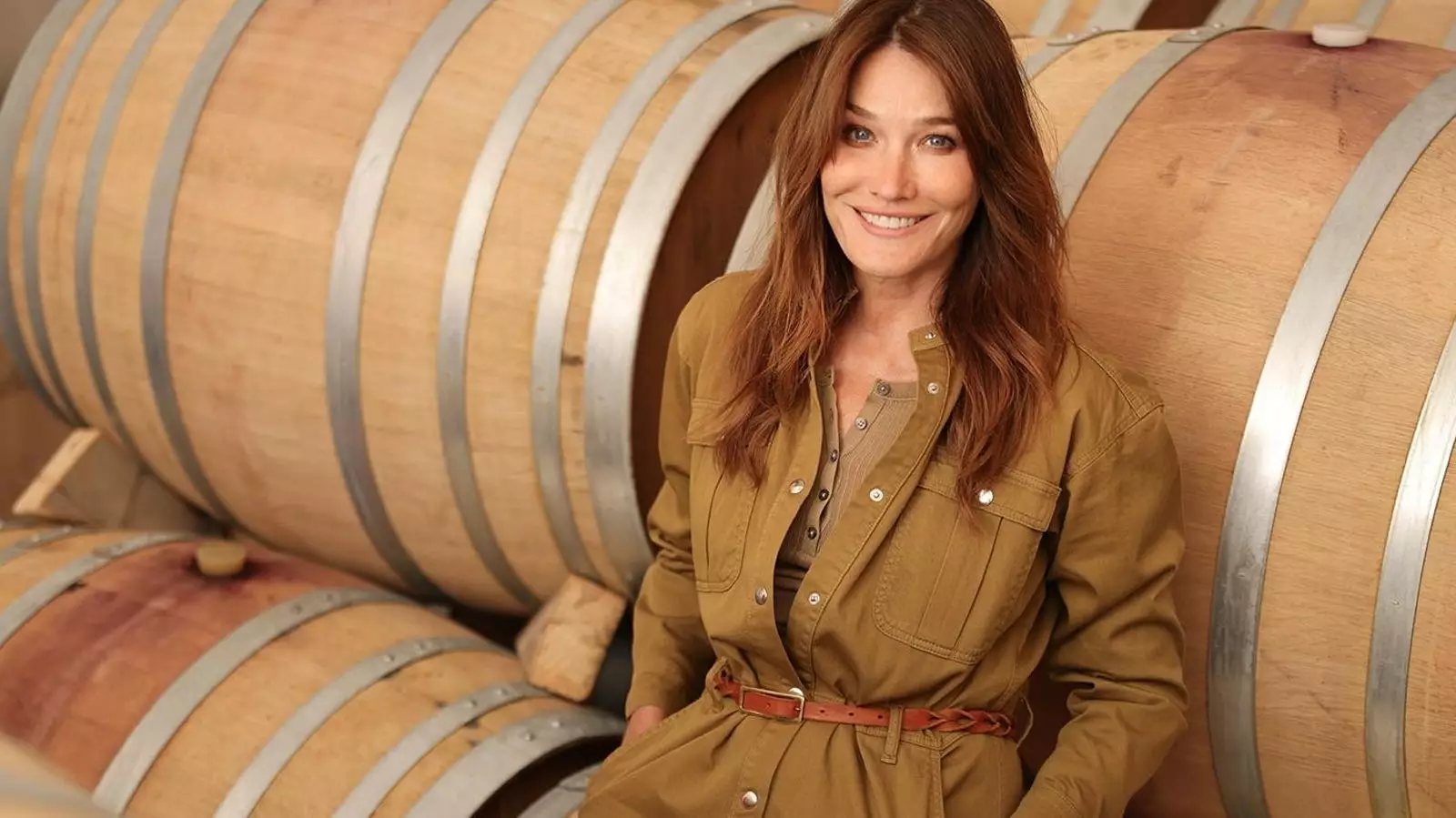In the sun-drenched fields of Provence, a quiet revolution is taking shape. The centuries-old estate of Château d’Estoublon, long celebrated for its exquisite olive oils, is being reimagined as a hub of modern vinocultural luxury. What sets this transitional moment apart isn’t just a fresh coat of paint or shiny new packaging—it’s a deliberate, strategic pursuit of authenticity, innovation, and emotional resonance. At the heart of this transformation is Roseblood, a rosé that challenges conventions and redefines what a luxury wine can be in a crowded marketplace.
This initiative, driven by a diverse coalition of high-profile investors—including Carla Bruni, Nicolas Sarkozy, and industry veterans like Jean-Guillaume Prats—signals a bold departure from traditional Provence wine branding. Instead of following the herd with overly commercialized bottles designed to capture fleeting social media attention, the team’s focus is on creating a lasting legacy. Roseblood aims for a seamless blend of aesthetic appeal, structural integrity, and expressive complexity. It is not simply a pink drink; it’s a statement of purpose with a compelling story rooted in the ancient land and contemporary craftsmanship.
A Refreshing Take on Rosé’s Potential
The global craze for rosé has been a double-edged sword. While it has propelled the category into mainstream consciousness, much of its success hinges on lifestyle marketing. Many bottles today serve as Instagram props—pale hues, sun-kissed beaches, and poolside tranquility. Yet, beneath this superficial allure, many wines lack the depth and longevity that true connoisseurs seek. Roseblood, with its carefully curated flavor profile, aims to break this mold.
The wine presents an elegant medley of flavors: wild strawberries and peach skins open the palate, giving way to lively citrus notes and a mineral-driven finish. Its restraint in vinification—eschewing excessive weight or glycerol—ensures a clean, lively, and balanced expression. This is a rosé made for those who appreciate finesse over flash, rooted in the complexities of the terroir rather than fleeting trends.
Joyeux’s meticulous approach to balancing aromatic expressiveness with structural unity underscores an evolving philosophy—what he terms “balanced complexity.” It’s a term that encapsulates his deep understanding that great wine isn’t about shouting; it’s about whispering with clarity. The grapes—Grenache, Syrah, Cinsault, and Rolle—are cultivated on high-altitude slopes in the Coteaux Varois, a lesser-known yet highly sophisticated wine region that allows for extended ripening and nuanced flavor development.
From Niche to Luxury: A Broader Vision
The emergence of Roseblood isn’t an isolated triumph; it’s part of a comprehensive strategic overhaul of Château d’Estoublon. Bruni’s influence extends beyond marketing to a holistic lifestyle offering: an upgraded hospitality experience, a boutique, a restaurant, and innovative products like L’Excessive, a non-alcoholic sparkling beverage. This move taps into the rapidly growing market for sophisticated, alcohol-free options—a sector expected to reach over a billion dollars in the near future.
Bruni’s background in fashion and music infuses the estate’s branding with a keen sense of authenticity and emotional storytelling. Rather than simply replicate existing luxury narratives, she insists on conveying sincerity and emotional depth. Every aspect of the estate, from manicured gardens to refined tasting rooms, reflects this ethos of artful living—an “Art de Vivre” that extends beyond the bottle to encompass experiences, aesthetics, and storytelling.
The estate’s evolution isn’t only about image—they are aggressively investing in sustainability via certification like HVE Level 3, emphasizing eco-consciousness and environmental stewardship. This commitment is reflected in the quality of the vineyards, which are carefully maintained to produce grapes of heightened aromatic purity and finesse.
A Powerhouse in the Global Market
Operationally, Château d’Estoublon is maneuvering with the agility of a start-up, despite its historic roots. Prats, with his extensive experience at Châteu Lafite Rothschild and LVMH, brings a commercial acumen that ensures Roseblood’s success isn’t just about artistry but also about strategic market penetration. The wine’s early sell-outs and preference among Michelin-starred chefs attest to the brand’s rising influence and refined positioning.
Unlike Whispering Angel, which democratized Provençal rosé through lavish branding and widespread availability, Roseblood is designed to appeal to a discerning, globally minded clientele. Its price point and deliberate scarcity make it a statement piece for collectors and connoisseurs rather than just a casual summer sipper. The intent is to elevate rosé to an art form—an elegant, complex beverage that embodies the luxury of its landscape and the craftsmanship behind its creation.
Furthermore, the estate’s engagement with high-end venues and boutique retailers underscores an understanding that true luxury is about curated, intimate experiences. The upcoming collaboration with a prestigious French fashion house promises to bridge the worlds of fashion and viniculture—an alliance that exemplifies Bruni’s vision of “emotional elegance.”
The Future of Luxury Wines Is Authentic and Distinctive
Château d’Estoublon’s rebirth signals a broader shift in the premium wine landscape. As consumers become more discerning—seeking authenticity, sustainability, and storytelling—brands that cling to superficial branding and fleeting trends risk obscurity. Roseblood’s emphasis on terroir, craftsmanship, and emotional connection positions it at the forefront of a new wave of luxury wines that prioritize depth and meaning.
This approach is a stark contrast to mass-market rosés that thrive on ubiquity and visual appeal alone. Here, craftsmanship, strategic positioning, and narrative flourish as the true markers of value. Roseblood isn’t just a brand; it’s a deliberate confrontation to the ugly side of branding, offering instead a sincere expression of place, passion, and purpose.
In doing so, it asserts that the future of luxury wine isn’t in ephemeral social media moments but in creating lasting emotional connections—wines that tell stories worth remembering. Château d’Estoublon’s journey exemplifies this shift, proving that even a historical estate can reinvent itself by embracing authenticity, innovation, and bold storytelling. It’s a lesson in how true luxury is crafted not just in the vineyards, but in the philosophies and visions that shape a legacy.


Leave a Reply